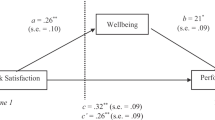Abstract
While telecommuting has received considerable attention in recent years, most of the discussion is descriptive and the empirical investigations have been limited. Accordingly, the purpose of this study was to determine the effect of selected variables on telecommuting productivity and satisfaction. Respondents (N=97) were from eleven different public and private organizations. Five research propositions were examined. Among the findings, telecommuter satisfaction with the performance evaluation system was significantly correlated with both telecommuting productivity and satisfaction. Technical and emotional support received from the telecommuting supervisor was significantly correlated with telecommuting satisfaction, and the negataive correlation between family disruptions and telecommuting satisfaction was also statistically significant. A significant negative correlation between the ratio of telecommuting hours to total work hours and telecommuting productivity was revealed. Interestingly, child care issues and most demographic and occupational characteristics were not significantly correlated with either telecommuting productivity or satisfaction. A detailed discussion of the implications of the results is provided.
Similar content being viewed by others
References
Bailyn, L. 1989. “Toward the Perfect Workplace?”Communications of the ACM, 32:460–471.
Campbell, A., Converse, P., and Rogers, E. 1976.The Quality of American Life. New York: Russell Sage.
Cristensen, K. 1988. “Telecommuting: Managing a Long-Distance Work Force.”Small Business Reports, 13:64–66.
Gordon, G.E. 1988. “The Dilemma of Telework: Technology Vs. Tradition.” In Korte, W.B., Robinson, S., and Steinle, W.J. (Eds.),Telework: Present Situation and Future Development of a New Form of Work Organization (pp. 113–136). Amsterdam: North-Holland.
Hirshey, G. 1985. “How Women Feel About Working At Home.”Family Circle, 98:70–74.
Lambert, S.J. 1990. “Processes Linking Work and Family: A Critical Review and Research Agenda.”Human Relations, 43:239–258.
Lodahl, T.M. and Kejner, J. 1965. “Definition and Measurement of Job Involvement.”Journal of Applied Psychology, 49:24–33.
Nunnally, J.C. 1978.Psychometric Theory. New York: McGraw Hill.
Olson, M.H. 1989. “Work at Home for Computer Professionals: Current Attitudes and Future Prospects.”ACM Transactions on Office Information Systems, 7:317–338.
Olson, M.H. and Primps, S.B. 1984. “Working At Home With Computers: Work and Nonwork Issues.”Journal of Social Issues, 40:97–112.
Olson, M.H. 1988. “Organizational Barriers to Telecommuting.” In Korte, W.B., Robinson, S. and Steinle, W.J. (Eds.),Telework: Present Situation and Future Development of a New Form of Work Organization (pp. 77–100). Amsterdam: North-Holland.
Olson, M.H. 1985. “Do You Telecommute?”Datamation, 31:129–132.
Olson, M.H. 1983. “Remote Office Work: Changing Work Patterns in Space and Time.”Communications of the ACM, 26:182–187.
Pratt, J.H. 1984. “Home Teleworking: A Study of Its Pioneers.”Technological Forecasting and Social Change, 25:1–14.
Quinn, R.P. and Staines, G.L. 1989.The 1977 Quality of Employment Survey. Ann Arbor: University of Michigan.
Raimondi, D. 1985. “Study Reports Telecommuting Boosts Work Quality”.Computer-world, 19:18.
Ramsower, R.M. 1985.Telecommuting: The Organizational and Behavioral Effects of Working At Home. Ann Arbor: University of Michigan Research Press.
Risman, B.J. and Tomaskovic-Devey, D. 1989. “The Social Construction of Technology: Microcomputers and the Organization of Work.”Business Horizons, 32:71–75.
Salomon, I. and Salomon, M. 1984. “Telecommuting: The Employee's Perspective.”Technological Forecasting and Social Change, 25:15–28.
Shamir, B. and Salomon, I. 1985. “Work-at-Home and the Quality of Working Life.”Academy of Management Review, 10:455–464.
Author information
Authors and Affiliations
Rights and permissions
About this article
Cite this article
Hartman, R.I., Stoner, C.R. & Arora, R. An investigation of selected variables affecting telecommuting productivity and satisfaction. J Bus Psychol 6, 207–225 (1991). https://doi.org/10.1007/BF01126709
Issue Date:
DOI: https://doi.org/10.1007/BF01126709




